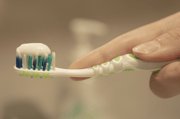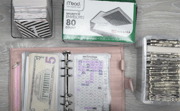Nearly 18,000 ice cream tubs recalled—what to know before your next scoop
By
Veronica E.
- Replies 0
There’s nothing quite like enjoying a scoop of ice cream on a warm afternoon, especially when you’re out with family or relaxing at your favorite local spot.
But a recent recall may have some dessert lovers thinking twice before they dig in.
A major ice cream manufacturer has issued a voluntary recall affecting nearly 18,000 tubs of ice cream distributed nationwide.
The reason? A risk that certain containers may contain small pieces of plastic—posing a potential choking hazard.
While no one has been hurt, officials say the issue is serious enough to take extra precautions.

Wells Enterprises—the company behind popular brands like Blue Bunny and Halo Top—announced the recall after discovering that a batch of its three-gallon tubs might include plastic fragments.
These large containers are typically sold to restaurants, cafeterias, and ice cream parlors, not grocery store shelves.
The FDA announced the recall and classified it as a Class II, indicating that eating the affected ice cream could lead to temporary or treatable health issues.
Although no injuries or illnesses have been reported so far, the company, in coordination with the FDA, is encouraging businesses to act quickly and dispose of any affected tubs.
The recall involves a variety of flavors and products, but here are the key facts:
A full list of affected flavors and lot numbers is available on the FDA’s website.
Although Wells Enterprises hasn’t named every state involved, the recalled ice cream was shipped to over 100 distribution centers across the country.
That means restaurants and cafeterias in many regions could be affected.
If you’re dining out and plan to order ice cream, it’s okay to ask your server whether their supplier has been affected by the recall.
Restaurants and food service providers have already been notified and are being advised to discard the recalled tubs immediately and contact the manufacturer for a refund.
If someone in your family works in food service, it’s worth sharing the information—just to be on the safe side.
Wells Enterprises hasn’t shared the exact cause of the contamination, but incidents like this typically happen during production.
Machinery issues, packaging malfunctions, or human error can sometimes allow foreign materials to get into the food.
Most food safety protocols are designed to catch problems before products leave the facility, but occasional lapses can still occur.
This isn’t the first time ice cream has been involved in a recall.
Earlier this year, a mochi ice cream manufacturer pulled 1,350 cases of its Peach Mango Sorbet from shelves after discovering it contained undeclared egg whites—a risk for those with allergies.
In that case, there were two reported reactions before the recall was issued.
These situations are reminders that even familiar, trusted foods can occasionally pose unexpected risks.
Fortunately, there have been no reports of injuries connected to this recall.
That’s thanks in part to the swift action taken by Wells Enterprises, the FDA, and the food service community.
Still, it’s a good reminder that even small risks deserve our attention—especially when it comes to keeping meals and treats safe for everyone.
Read next: Are your groceries really safe? Popular sausage brand issues recall over contamination concerns

Have you ever experienced a food recall? Do you have tips for staying cautious while dining out or shopping for groceries? Or maybe you just want to share your favorite ice cream flavor—safe ones only, of course! Feel free to share your thoughts in the comments.
But a recent recall may have some dessert lovers thinking twice before they dig in.
A major ice cream manufacturer has issued a voluntary recall affecting nearly 18,000 tubs of ice cream distributed nationwide.
The reason? A risk that certain containers may contain small pieces of plastic—posing a potential choking hazard.
While no one has been hurt, officials say the issue is serious enough to take extra precautions.

Nearly 18,000 tubs of ice cream have been recalled due to concerns about plastic contamination. Image Source: Pexels / Lukas.
What’s behind the recall?
Wells Enterprises—the company behind popular brands like Blue Bunny and Halo Top—announced the recall after discovering that a batch of its three-gallon tubs might include plastic fragments.
These large containers are typically sold to restaurants, cafeterias, and ice cream parlors, not grocery store shelves.
The FDA announced the recall and classified it as a Class II, indicating that eating the affected ice cream could lead to temporary or treatable health issues.
Although no injuries or illnesses have been reported so far, the company, in coordination with the FDA, is encouraging businesses to act quickly and dispose of any affected tubs.
Which ice cream products are affected?
The recall involves a variety of flavors and products, but here are the key facts:
- Only large three-gallon tubs are affected. These are sold to food service businesses—not to consumers in retail stores.
- A wide range of flavors is included in the recall, such as vanilla, chocolate, rocky road, and cotton candy.
- The most affected flavor is vanilla frozen yogurt with 5,280 tubs recalled.
- Other recalled products include Glenview Farms Artificially Flavored French Vanilla Ice Cream (2,261 tubs) and Vanilla Flavored Ice Cream (1,573 tubs).
A full list of affected flavors and lot numbers is available on the FDA’s website.
Also read: Avoid a dangerous mistake: Find out which ice cream product to ditch after FDA’s latest high-risk alert
How far has the product reached?
Although Wells Enterprises hasn’t named every state involved, the recalled ice cream was shipped to over 100 distribution centers across the country.
That means restaurants and cafeterias in many regions could be affected.
What should diners and food workers do?
If you’re dining out and plan to order ice cream, it’s okay to ask your server whether their supplier has been affected by the recall.
Restaurants and food service providers have already been notified and are being advised to discard the recalled tubs immediately and contact the manufacturer for a refund.
If someone in your family works in food service, it’s worth sharing the information—just to be on the safe side.
Also read: What’s touching your food? A recent lawsuit raises concerns about microplastics
How could plastic end up in ice cream?
Wells Enterprises hasn’t shared the exact cause of the contamination, but incidents like this typically happen during production.
Machinery issues, packaging malfunctions, or human error can sometimes allow foreign materials to get into the food.
Most food safety protocols are designed to catch problems before products leave the facility, but occasional lapses can still occur.
Food recalls in context
This isn’t the first time ice cream has been involved in a recall.
Earlier this year, a mochi ice cream manufacturer pulled 1,350 cases of its Peach Mango Sorbet from shelves after discovering it contained undeclared egg whites—a risk for those with allergies.
In that case, there were two reported reactions before the recall was issued.
These situations are reminders that even familiar, trusted foods can occasionally pose unexpected risks.
Also read: Are you eating plastic? Urgent recall of a popular Trader Joe’s frozen item!
Tips for staying safe
- Ask questions when eating out
It’s okay to ask how food is sourced, especially if you have dietary restrictions or concerns about ingredients. - Check for recalls regularly
The FDA posts updates frequently on food recalls. It’s a helpful habit to check in now and then, especially if you're hosting a gathering or event. - Report anything unusual
If you notice something off about your food—whether it’s texture, color, or taste—let the business and the FDA know. Your report could help prevent harm to others. - Share recall news
Let friends and loved ones know about food recalls that could affect them. The more people are informed, the safer we all are.
Fortunately, there have been no reports of injuries connected to this recall.
That’s thanks in part to the swift action taken by Wells Enterprises, the FDA, and the food service community.
Still, it’s a good reminder that even small risks deserve our attention—especially when it comes to keeping meals and treats safe for everyone.
Read next: Are your groceries really safe? Popular sausage brand issues recall over contamination concerns
Key Takeaways
- Nearly 18,000 tubs of popular ice cream have been recalled nationwide due to fears they contain plastic shards that could pose a choking hazard.
- The recall affects large three-gallon tubs sold mainly to restaurants, cafeterias, and other food service businesses—not to grocery stores.
- Multiple flavors are involved in the recall, with vanilla frozen yogurt and various vanilla ice cream products being the most common affected.
- No injuries have been reported, but businesses are advised to discard the affected ice cream and contact the manufacturer for a refund; details on the recall are available on the FDA’s website.
Have you ever experienced a food recall? Do you have tips for staying cautious while dining out or shopping for groceries? Or maybe you just want to share your favorite ice cream flavor—safe ones only, of course! Feel free to share your thoughts in the comments.






